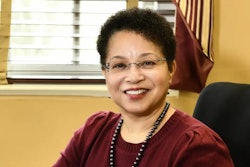Parting Words
Outgoing college presidents share thoughts about challenges facing HBCUs as well as the state of higher education.
By Cheryl D. Fields
The transition from spring to summer is one of higher education’s most exciting periods. It is a time when students who have toiled for years to achieve their academic goals finally get an opportunity to turn the tassel in front of their parents, peers and professors. It is when faculty members segue into summer modes of field research, sabbatical leave, or summer school activities. And it is when the remaining students head off to pursue their summer adventures.
In higher education, this period also is marked by another type of transition: the resignation and or retirement of some of our institutions’ senior leaders. This year is no exception. Among those who are stepping down from presidencies or chancellor posts to pursue retirement or other opportunities is a stellar group of African Americans. They include: Dr. Leonard Dawson, president of Voorhees College; Dr. Frederick Humphries, president of Florida A&M University; Dr. Joe Lee, president of Tougaloo College; Dr. Julius Nimmons, president of the University of the District of Columbia; and Dr. Gloria Randle Scott, president of Bennett College.
We invited these distinguished leaders to respond to one of six questions, each soliciting their parting thoughts about the state of higher education and what they think the next generation of postsecondary leaders must do to keep the doors of educational opportunity open for African Americans and all students. Their reflections provide insights for all of us to consider.
Crafting New Visions
for a New Century
Dr. Leonard E. Dawson was named president of Voorhees College in 1985. At the time, the Denmark, S.C., school was struggling under the weight of a $1.5 million deficit. Dawson set out not only to erase the deficit, but to expand enrollment, increase its academic offerings and grow the school’s endowment.
Today, Voorhees has an enrollment of 700, more than double what it was prior to Dawson’s tenure as president. Its endowment has tripled from $2.3 million to $7.5 million and according to school officials, the college has enjoyed a balanced budget for 16 consecutive years. The campus also has erected $10 million in new campus facilities, completed $5 million in renovations to existing buildings and has added new academic programs in computer science and geographic information systems.
Dawson intends to spend his retirement in Richmond, Va., where he says he’s looking forward to spending more time with his wife Dr. Laura Dawson.
BI: What, in your opinion, are the three most important priorities facing presidents of historically Black institutions?
Dawson: The overriding imperative for presidents of historically Black colleges continues to be establishing a sound and reliable funding base for the programs and services that the institution provides for their students. Unfortunately, only a handful of our institutions have large endowments and predictable resources of revenue of sufficient size to enable the chief executive to devote his/her attention to other more creative aspects of college leadership.
Another very important priority is the need to recruit and retain a top-notch, academically qualified faculty committed to the mission of the historically Black college. This is especially difficult in the areas of critical need such as the hard sciences and technology.
Finally, presidents of these colleges must find a way to articulate consistent, meaningful and relevant visions for the institutions consistent with the educational, social and moral imperatives — even in the midst of an ever-changing social and political climate.
Preparing for Today’s
Technological Society
Dr. Frederick S. Humphries stunned the campus, the state and even his closest associates when he announced his resignation from Florida A&M University earlier this year. For the past 16 years, he has been the backbone of the university, garnering praise for significantly increasing the university’s enrollment and attracting some of the brightest scholars in the nation.
When Humphries was appointed president in 1985, FAMU had only one National Achievement Scholar enrolled. Since 1988, however, FAMU has been among the nation’s top five recruiters, earning the top spot in 1992, 1995 and 1997. This year FAMU tied with Harvard as the No. 1 recruiter of National Achievement Scholars.
The university has experienced record-breaking enrollment under Humphries’ leadership. In 1985, enrollment was 5,100; today, it exceeds 12,200.
Humphries plans to take a year’s leave to study at Cambridge University in England. He will return to head up a policy research center at FAMU’s new law school in Orlando.
BI: Has being an African American president of a postsecondary institution in any way changed your outlook on education as an instrument of societal change? If so, how?















